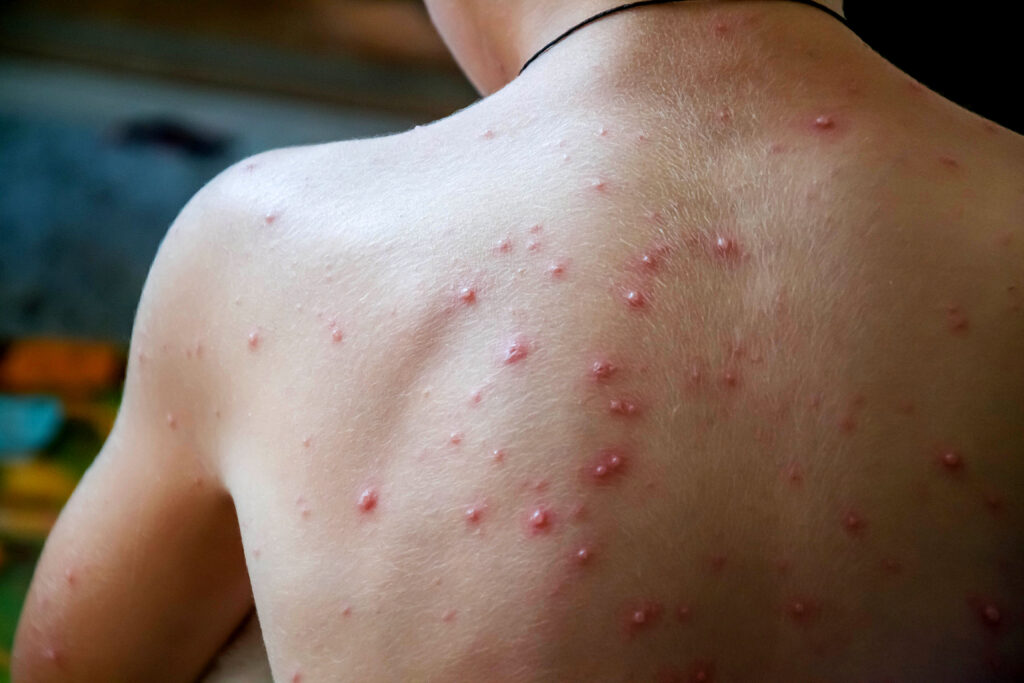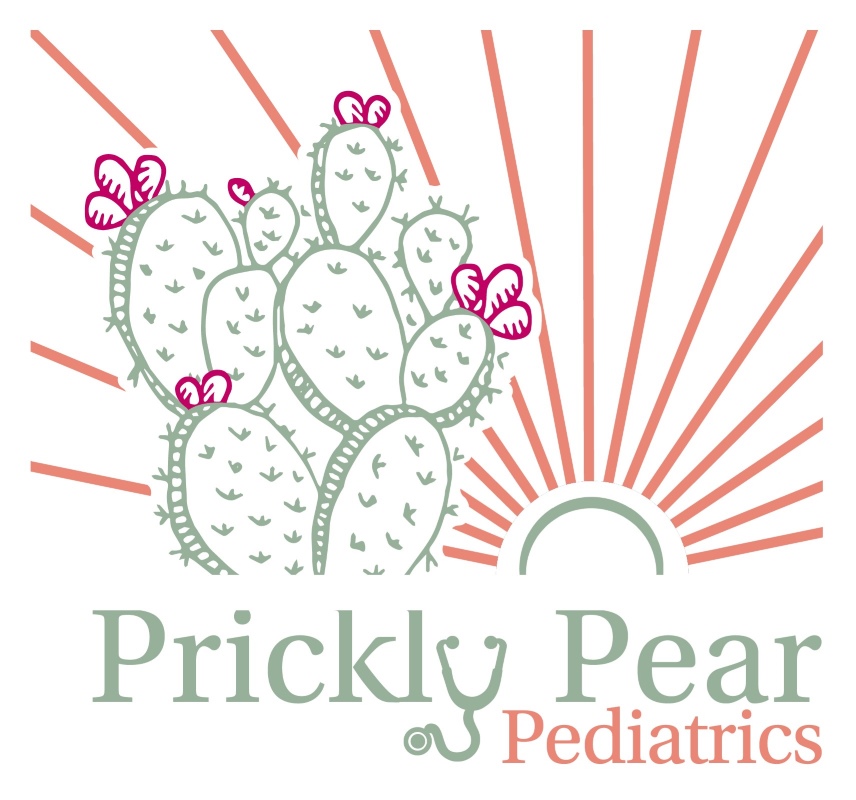The Chickenpox

Last week, I learned about a chickenpox outbreak in a nearby community. Since knowledge is power, it seemed like a good time to share what I think you should know about Chickenpox from a Pediatrician’s perspective.
What is it?
Chickenpox, who’s technical name is Varicella Zoster Virus (VZV), is a virus that causes what used to be a very common childhood illness well known for its itchy rash. When I was little, chickenpox was a very common illness. I had it myself around the age of 3. I don’t remember much, although I vaguely remember my parents putting socks on my hands and building a “pillow fort” for me to play inside of that I would stay away from my infant brother. Thankfully, chickenpox is a lot less common now, since a vaccine to help prevent chickenpox was rolled out in 1995. VZV is also famous for causing another illness, shingles. This is a painful rash caused by a reactivation of the VZV which has been hiding dormant inside peripheral nervous system cells.
What are the symptoms?
When someone gets infected with this virus (VZV) for the first time, usually somewhere between 10-21 days after exposure to the virus, they develop fever, fatigue, decreased appetite, and sometimes sore throat. Then, usually within 24 hours of those symptoms, a rash pops up (the famous chickenpox rash). The rash can be on the face, trunk, and arms/legs. It starts as pink flat spots, then clear bubbles form on top of the flat spots. In medical school, we learn this rash described as a “dewdrop on a rose petal,” which I think is an oddly elegant way to describe a very annoying rash. As the rash progresses, those clear bubbles can turn cloudy, then they scab and crust over. The spots (aka pox) are typically very itchy. They also pop up in “successive crops” for about 4 days, so on day 3 of the rash, you can have some old spots that have been there for 3 days along with some brand new spots that just started that day.
What is the treatment?
For healthy children without significant risk factors for severe disease that are less than the age of 12, we just recommend rest, fluids, and treat the symptoms. The fever can be treated as needed (more on that here), but never give aspirin to a child with fever (see below). The itchiness from the rash can be calmed down by an age appropriate dose of an antihistamine such as Zyrtec, Claritin, or Benadryl. I do not recommend rubbing benadryl cream on the rash, as the skin can absorb the Benadryl (antihistamine) and cause too high of a dose in the bodies of young children. Calamine lotion on the rash can help a bit. It is important to keep children’s nails cut short so that there is less risk of bacteria under the nails causing a skin infection from scratching. Kids 13 years and older and adults who are unvaccinated or have risk factors for more severe disease may be treated with an antiviral medicine such as acyclovir.
How does it spread?
VZV virus is highly contagious. It is spread by aerosolized droplets from nose/mouth or by direct contact with the fluid in the vesicles (the clear/cloudy bubbles) in the rash. Infected people are contagious usually from about 48 hours before development of rash until skin lesions have crusted over. This means that the majority of infected people are contagious for between 5-7 days.
Who is most vulnerable?
Most healthy children get a mild course of the illness. However, as is true with most viral/bacterial illnesses, newborns and children who have a compromised immune system are more vulnerable to a severe course. Children with certain illness and conditions (example: organ transplant recipients, severe congenital immunodeficiency, leukemia and other cancers requiring immunosuppression) are unable to receive the vaccine and are much more vulnerable to complications and severe illness. Chickenpox actually tends to hit adolescents and adults harder than healthy children. Pregnant women are especially vulnerable to complications from this virus, especially pneumonia. In addition, if a woman contracts the virus between week 8 and 20 of her pregnancy, there is a small chance that the virus can pass through the placenta to affect the fetus and cause congenital birth defects. Possible birth defects include scarring of the skin, neurologic abnormalities, eye development abnormalities, underdeveloped limbs, gastrointestinal abnormalities, and low birth weight.
What are the complications?
Although most cases of chickenpox in children are mild, there are several possible complications that can arise:
Skin/soft tissue infections
Likely in part because the rash is itchy, the most common complication is a secondary skin infection. These skin infections can be severe and require hospitalization for IV antibiotics.- Neurologic complications
- Encephalitis. This occurs more often in adults but young children also at risk. Looks like delirium, seizures and is likely due to combination of blood vessel inflammation/damage and inflammation of the ventricles in the brain.
- Cerebellar ataxia. This is usually onset a few days up to 3 weeks after having chickenpox or other febrile illness. It presents with acute onset of difficulty with walking, balance, and fine motor skills. There can be many additional symptoms.
- Reyes syndrome. This way less common now since we know not to give salicylates (aspirin) to children with fever. This is a syndrome which includes vomiting, headache, delirium, combativeness, which can progress to coma and death.
- Neurologic complications
- Pneumonia
This is less common in kids than adults. In adults with chickenpox, pneumonia develops in approximately 1 out of 400 cases. This is a significant cause of morbidity and mortality in adults with chickenpox and has a 10-30% fatality rate. Pneumonia usually occurs within 1-6 days of rash appearance, can be treated with acyclovir (an antiviral medication). - Hepatitis
This is a very rare complication. It typically only occurs in immunosuppressed people and when it does occur, is often fatal. However, we know that transient liver inflammation during chickenpox infection is common, with liver enzyme levels found to be increased in 77% of children in one study.
Why is it uncommon now?
After the varicella vaccine was released in 1995, the number of cases of chickenpox began to plummet. In the early 90’s, there were an estimated 4 million cases of chickenpox in the US each year, with an average of 10,500 to 13,500 hospitalizations per year (majority of those hospitalized were children) due to the illness, and 100 to 150 deaths per year (about half of those deaths were children). Now, chickenpox is rare in the United States, with fewer than 150,000 cases each year, average of 1,400 hospitalizations, and less than 30 deaths each year. Along with that, complications from chickenpox have become less common. The vaccine has helped to decrease the number of people who become actively infected with VZV, decrease transmission of the virus, and decrease the number of people who develop the Shingles later in life. Thankfully, a large majority of children and adults in the United States will not have to endure the misery of the itchy rash or be at a risk from the complications from the virus.
~~Dr. Webb
Resources:

